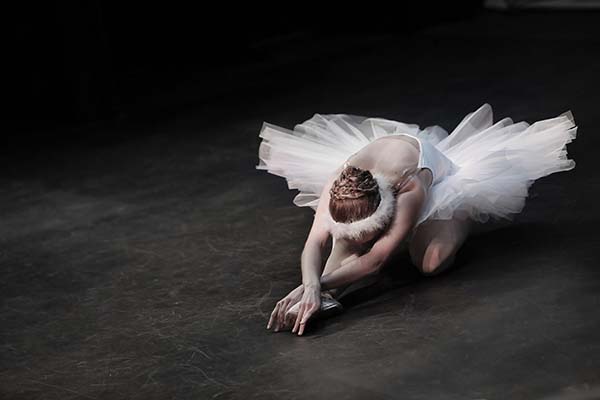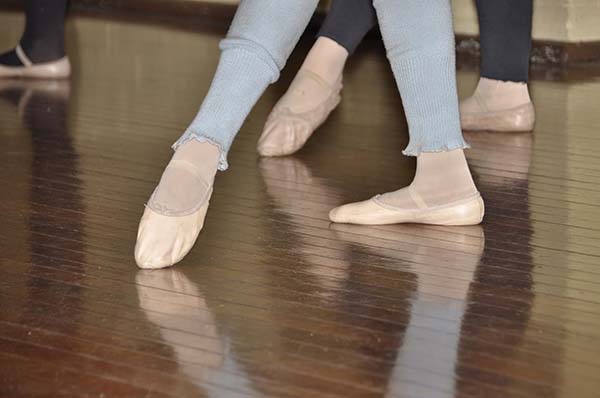by Dot Cannon

How do you go on, after your life’s dream collapses?
How might students use their cameras, to gain a better understanding of math concepts?
And what are the emotions that according to Dr. Deepak Chopra, can make your immune system work better?
These are just three takeaways from the ninth annual, all-virtual California STEAM Symposium which concluded on Saturday afternoon.
We’ll be exploring the final day of the Symposium more in depth, over the week, along with the amazing student films we saw and the final keynote by Dr. Marissa Pei. But here is a quick look at our first three favorite takeaways!
A dancer’s anguish–and triumph

Co-hosted by nonprofit Californians Dedicated to Education Foundation, the California Department of Education and the California Commission on the Status of Women and Girls, the California STEAM Symposium is always an exciting exchange of ideas and a source of inspiration.
On Saturday morning, dancer/choreographer/dance instructor Kate Stanforth gave the day’s opening keynote.
Kate, who is the founder of Kate Stanforth Academy of Dance, led the audience in a breathing exercise before sharing her story.
“I am a disabled ballet dancer,” she began. “I am also a teacher and choreographer…I actually teach all over the world.”
At the age of two, Kate said, her parents took her to a dance class. She fell in love with dance immediately.
From there, her passion intensified. By the age of eight, she was in pre-professional dance training. Her goal was to someday dance in the Royal Ballet.
But, when she was fourteen, everything changed.
“I woke up one day and I couldn’t walk up the stairs,” Kate said. “…And we’re still not sure what happened…I got incredibly ill overnight and I never recovered. “
Confined to her bed, she was paralyzed at one point. Today, she still has a number of chronic conditions, which, Kate said, will be with her for life.
She’s also one of the first people with a disability to earn a teaching qualification. Six years after the onset of her illness, she returned to the dance studio.
And last year, with the onset of COVID, she opened a virtual dance studio of her own.
Giving from her heart–with ingenuity

“When COVID came,…the virus meant that both me and lot of my friends had our lives in…complete chaos,” Kate continued.
Shielding inside, she wondered how she might help “all these people in the UK who were (also) stuck inside.”
Her answer was dance. Currently, Kate said, she teaches weekly dance sessions online.
“And before I knew it, there (were) over a hundred people tuning in weekly, to dance with me.”
But Kate didn’t just talk about teaching dance.
She led her audience in an “inclusive tap” routine, from her wheelchair.
How? With special gloves she created, on her hands, choreographed to the music.
“You just sew the taps on your gloves, like this,” she explained.
Imaginative, innovative and fun? Very much so.
But a grand finale was still coming.
A masterful performance

Kate, who said she hadn’t danced in public since the onset of her illness,, other than a few Instagram posts, performed a dance from her wheelchair.
It was breathtaking.
Graceful leg extensions and arm motions amounted to a moving and beautiful performance.
While Zoom precluded a normal audience reaction, attendees posted their appreciation in the chat. More than one person said they were moved to tears.
“You have, basically, a standing ovation in the chat,” commented CDE Foundation STEAM Program Manager Karyn Warner, several minutes later.
Smile and say “three”

A second standout Saturday favorite was the afternoon’s “Bringing Math Into Focus: Media Arts Integration with Math and Photography” session.
Presenters Jacqueline Booker and Jeannine Flores, from the Los Angeles County Office of Education, started by asking attendees: “What was the last picture you took?”
Sunrises, pets, family members and Halloween-decorated neighborhoods were among the answers.
“We’re going to teach you some skills in photography today,” Jeannine said, before explaining the “Rule of Thirds” for photograph composition.
The Rule of Thirds, she explained, divides an image into thirds, horizontally and vertically. Then, she said, position the most important part of your image on one of the intersections, or “T’s”, of the resulting nine squares. And that technique could work for painting composition, as well as photography.
Jacqueline also shared a way to get an iPhone to divide the image seen in its camera, into the nine squares to create the Rule of Thirds grid lines!
After showing participants some images which did, and did not, follow the Rule of Thirds, Jeannine and Jacqueline had participants take their own photographs with their phones, following the Rule of Thirds, and share them Attendees could upload their pictures to a folder which Jacqueline and Jeannine provided.
“As you continue to work,” Jacqueline said, “we want to bring in, where does that mathematics fall?”
Jacqueline explained that she would explore math concepts with her students, then have them take a picture that illustrated a concept.
“I’m going to give students a ratio…and we’re going to ask them to take a picture of objects that represent that same ratio relationship,” she said.
Then, students write about their pictures, state whether they used the Rule of Thirds and tell the story behind the picture.
“So, great opportunity for students to make relationship, how they would use ratios out in the real world, as well as how creative they can be, using the resources around them.”
The happiness correlation

Saturday’s sessions–and this year’s California STEAM Symposium–ended with a keynote by organizational psychologist, broadcaster and podcast host Dr. Marissa Pei. Her motivational message–and her topic–focused on happiness.
“Happiness is a hundred per cent tied to your health,” Dr. Pei said. “Doctors can attest to this…that when you are happy and more positive, it actually influences your immune system.”
Quoting Dr. Deepak Chopra, Dr. Pei said that there were two emotions that would make the body sick.
Audience members, asked to type their guesses for the negatives in the chat, were able to come up with one of the correct answers: anger. Hostility, Dr. Pei said was, the other one.
“However, there are three emotions that make your immune system operate fully,” Dr. Pei continued. “…Guess what three those are.”
Audience members were able to guess “happiness” and “joy”.
“You’ve got two,” Dr. Pei said.
“…And the third one’s interesting. It is actually not peace, it’s not harmony. it is…creativity.”
“So when I work with my life balance clients, the first thing I (ask) is, ‘what do you do for fun?'”
“So here’s the fundamental, bottom-line key to happiness…the “ch” word.
“…And that is, choice. So I’m hoping…that you choose to remember to take back your choice.
“When you start the day this way (looking at the news on your phone), whatever you’re looking at is someone else’s choice of what they think the news is. It’s someone else’s choice of what they think is important.
“…You have the choice, to not pick this (phone) up, or pick it up and do something with it…that will make you feel that happiness and joy that will affect your health.”
